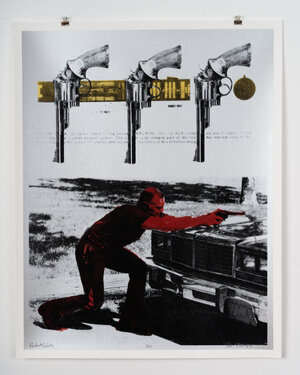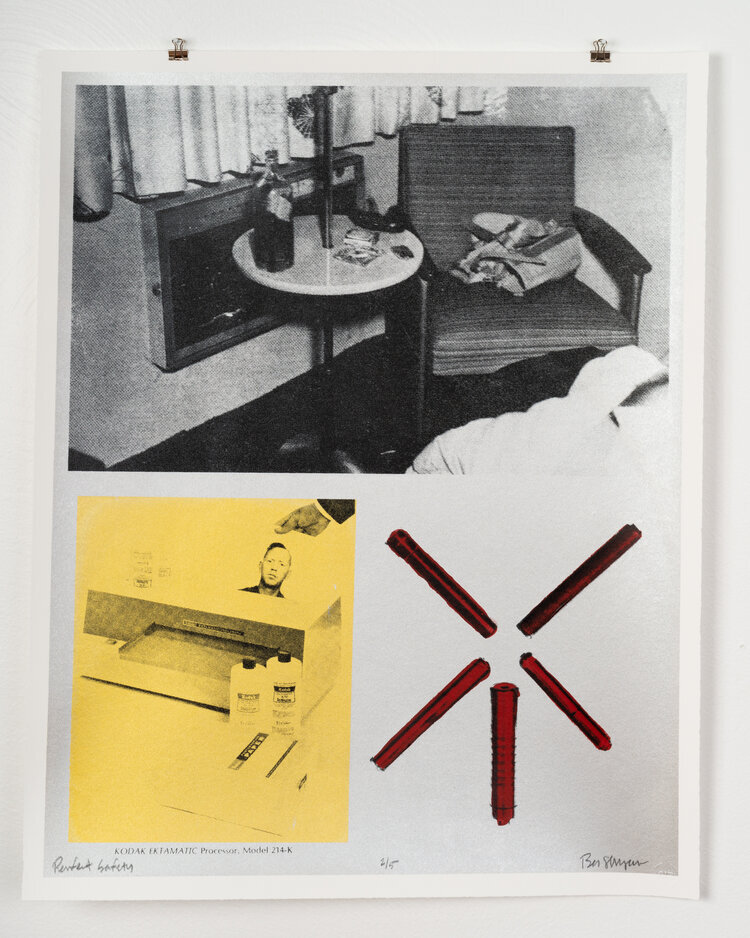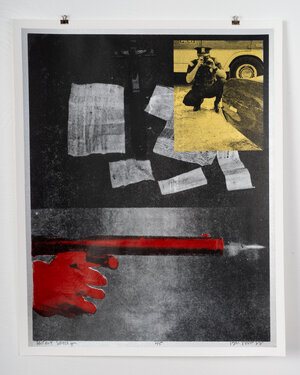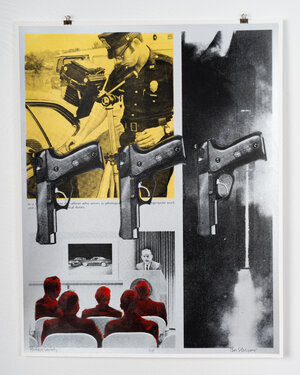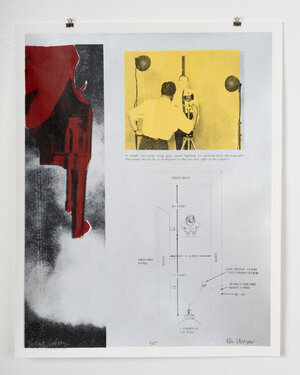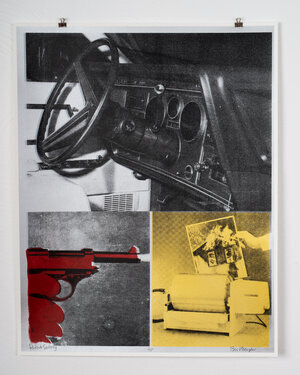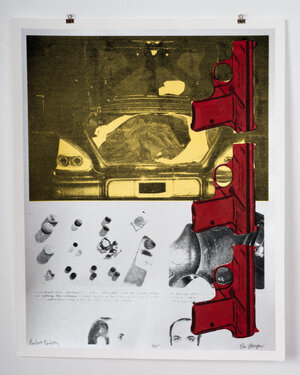PERFECT SAFETY
ROY presents: Ben Schonberger
Fri, Jul 10, 2020 - 7:00 PM
Sat, Aug 8, 2020 - 4:00 PM
My work approaches themes that surround archiving, identity, objectification and outlying. Several of my projects are long-term and involve layering, rearranging and augmenting created or found material, within the context of an archive. I appropriate police related subject matter as well as imagery that breaks down masculine and queer topics. Perfect Safety continues to focus on how archives can be used as mechanisms that reinforce control over a narrative or an idea and the possibilities that unravel when images are remediated or disrupted.
you can find more of Ben’s work here
Follow Ben when he takes over ROY’s Instagram July 28 & 30
Artwork is for sale and priced as marked. Artists receive 65% of sales and the 35% ROY retains is invested back into the gallery.
Perfect Safety 1/7, 2019, Hand Pulled Screen Print, 20 x 26” $3000 series
ROY ASKS
1. What is your name and pronouns?
Ben Schonberger he/him/his
2. What medium(s) do you work with and why?
My technical and conceptual training is in Photography but my studio practice incorporates a variety of mediums. I tend to gravitate to whatever tool and material I feel will best communicate the message I am trying to convey to a viewer.
3. How has art (whether it be your own or art in general) changed you?
Art, or should I say "effective art", "changes" me when I am able to look at something beyond what I believe something is or was. In other words, when an artwork lets me think about an idea (whether or not, i've seen the subject matter before) for the "first time", I always feel like something within me is or has changed- kind of like a reminder that there’s more to explore or understand. It's not about making something "new", it's about making something "smart".
4. How did you start your artistic practice?
I started taking my work seriously as an undergraduate student and continued my education as an artist in graduate school. Since then I have had studios in a variety of places and participated in residencies through nonprofits and museums.
5. Your works deal specifically with intersectional topics such as the police force, masculinity, and queerness. Have there been any hurdles or struggles that you experienced when dealing with these subjects on your own?
Definitely. Working with and layering complex ideas and subject matter is not an easy endeavor. It's important for artists to make work about topics that are meaningful, which sometimes can send you into places that are not the easiest to navigate.
These ideas- policing, power, queerness, and othering are intertwined and bridge complex first person experiences for many people. It's my job as an artist to create artworks where viewers can have meaningful and sometimes difficult conversations about life.
6. When a first-time viewer looks at your art, what is the first word that you hope they think when looking at it?
This is more of a feeling, but I hope a first time viewer experiences some form of empathy when viewing my work.
7. If you could meet any artist of your choosing (whether living or dead) and spend a day with them, who would it be?
Andy Warhol

